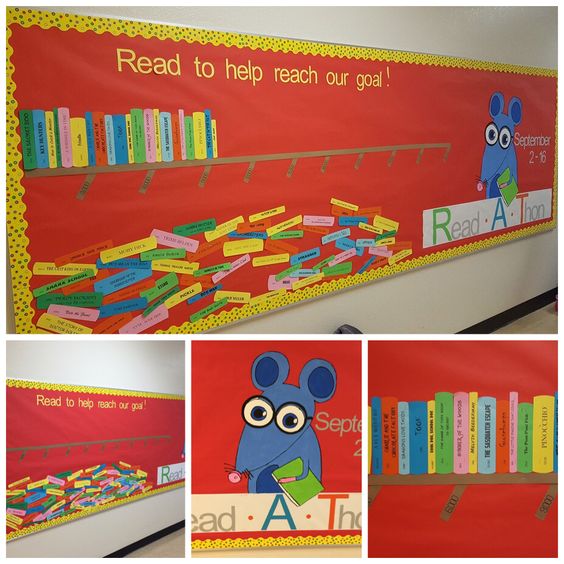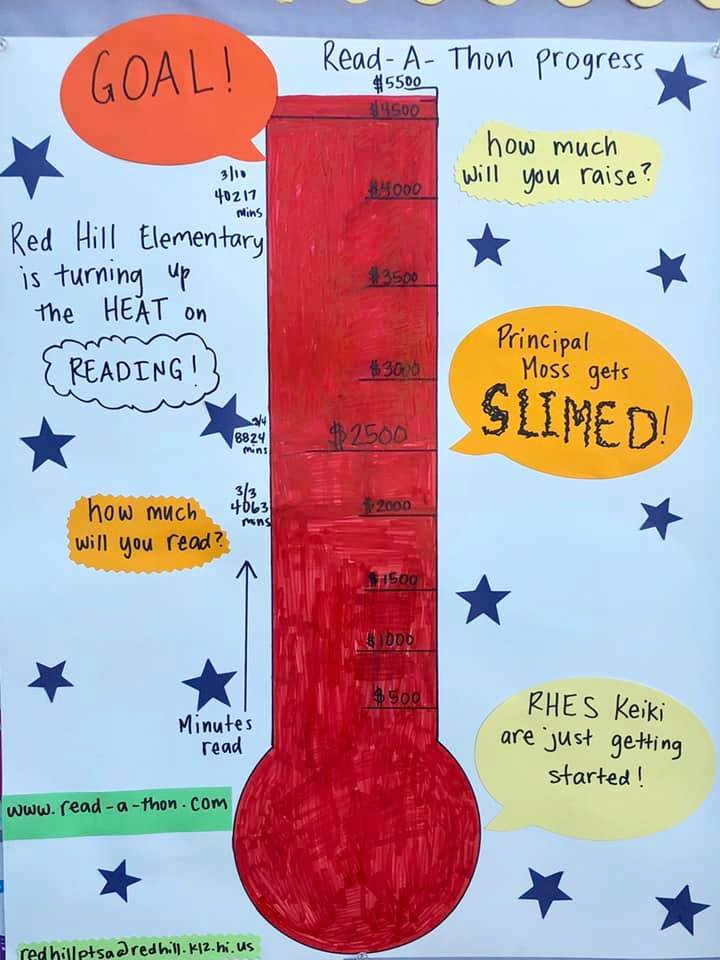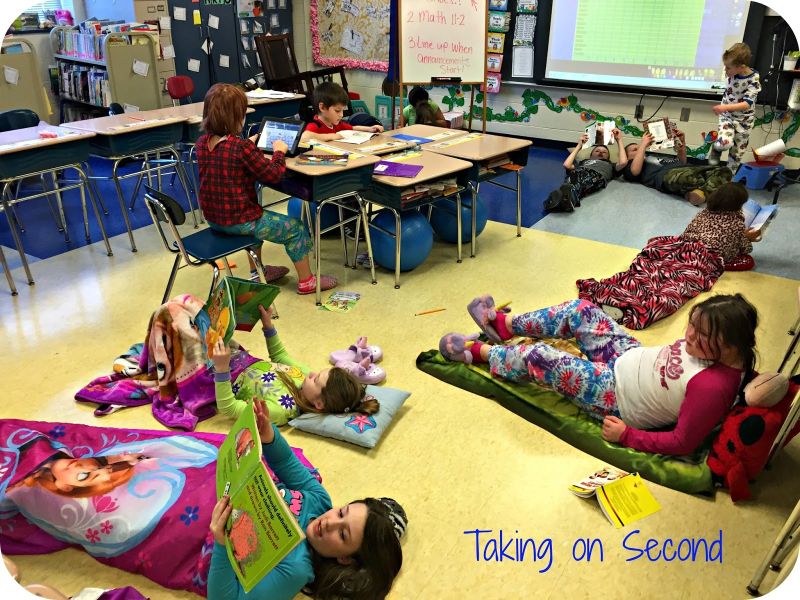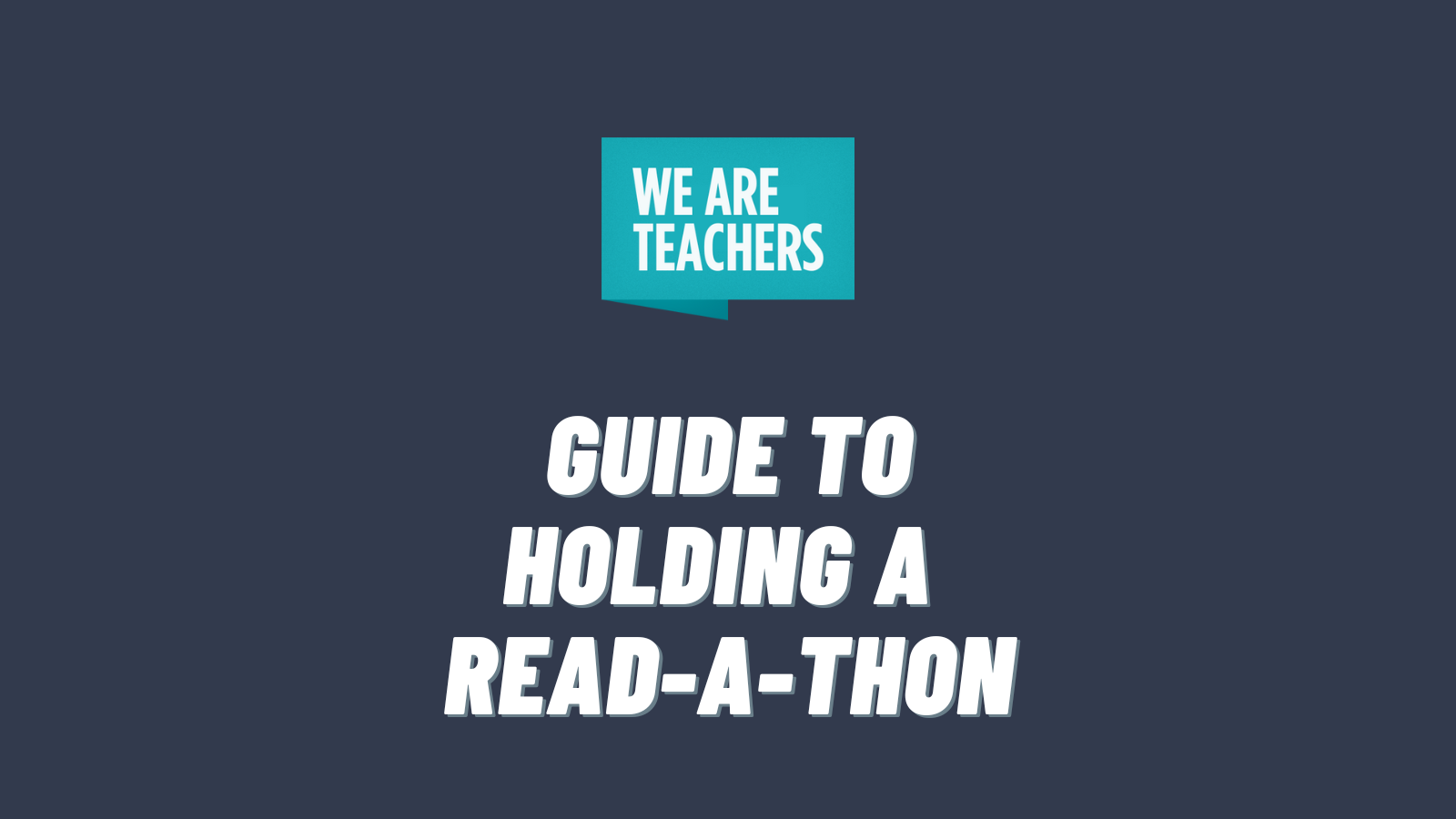Want a fun way to strengthen literacy skills, create a positive reading culture, and make some money for your school all at once? Try a read-a-thon fundraiser! Here’s what you need to know to set up and run one, plus ideas for creative activities to engage every student.
What is a read-a-thon?

In a read-a-thon fundraiser, students challenge themselves to read as much as possible in a set amount of time. Sponsors pledge money based on a variety of goals: reading a certain number of books, money per book or page read, or hours spent reading. They can support an individual student, a class, or the school as a whole.
Many schools combine read-a-thon fundraisers with lots of other fun literacy activities. They offer prizes to students, bring in guest speakers like authors or illustrators, and hold big group reading events.
The benefits to this kind of fundraiser go far beyond the money schools raise. It helps make reading fun and exciting, encouraging students to value it as more than just a school activity. And of course, the more kids read, the more they build and polish their skills.
How To Set Up a Read-a-Thon Fundraiser

1. Create overall guidelines and goals
Consider specifics like these:
- General purpose: Do you want to raise a little money while mostly encouraging reading? Or would you like to raise as much money as possible, with reading as a side benefit? You can also choose to leave the fundraiser portion out of it; instead, kids read to meet a goal like seeing the principal get slimed, or earning a pizza party for everyone.
- Participants: Who will participate? All students in a school, only students in a specific grade or class, or even an entire school district?
- Individuals or teams: Will kids set individual goals or work to achieve bigger goals as part of a team, class, or school? (You can even do a combination of both.)
- Reading goals: How will readers earn money? Will they pledge to read a certain number of books, pages, or hours, and receive money if they meet their goal? Or will sponsors pledge a small amount per page, book, or hour?
- Rewards: Providing small rewards to students as they progress can keep them involved and motivated. You can also give prizes at the end for students who smash their goals!
- Length: How long is your fundraiser? Most schools hold events for a week or two, with time for reading at school and at home, along with other reading events and activities.
- Theme: Choosing a theme can help drum up excitement, allowing you to create decorations and do activities and events that fit the concept. (See below for ideas.)
2. Set individual reading goals
Now it’s time for students or teams to set their reading goals. If sponsors will pay for each page, book, or hour they read, encourage participants to aim high! Even if they don’t completely meet their goal, they’ll still earn money for your school.
You can also have kids set personal goals (X number of pages, hours, or books) and have sponsors pledge a flat amount if they meet their goal. In this case, try to set goals that will invite students to stretch a bit but still be achievable.
Not using your read-a-thon as a fundraiser? Kids can set goals to earn prizes or rewards instead.
3. Find sponsors
Think carefully about this one, because this is how you’ll make money from this event. Here are some options:
- Individual sponsors: Kids ask family and friends to sign up to sponsor them. (Just remember that not all students have a supportive home life, so consider how you can make this an equitable activity for all.)
- Team sponsors: Students work in teams or classes to build up sponsors. (This can make things a little more equitable for all students.)
- School sponsors: Schools ask families and community members to support the school generally by pledging for the total number of pages, books, or hours read by all students.
- Community sponsors: Local businesses and organizations sponsor teams or the school as a whole.
It’s up to you to decide how you’ll register sponsors, but since paper forms are likely to get lost, consider using something like Google Forms instead.
4. Build excitement
In the lead-up to your read-a-thon, get students excited to participate! Try some of these ideas:
- Decorate the halls using your theme.
- Put up posters throughout your school.
- Send home flyers (paper or digital).
- Create a series of fun morning announcements.
- Post videos and reminders on social media.
5. Hold a kickoff event
This is optional, but it really turns your read-a-thon into something special. Give one of these ideas a try:
- School book fair: Find our favorite school book fair companies here.
- Curl Up and Read Day: Invite students and staff to wear pajamas and bring blankets, pillows, and stuffed animals to school. Then, spend a morning or afternoon reading together in a big space like the gym or playground. You can even provide yummy snacks.
- Celebrity read-aloud: Invite one or more local celebrities to come to your school and do read-alouds. If you get several, you can rotate classes between them so all kids get a more personal experience.
- Author visit: Invite an author to speak at your school, in person or virtually. Hearing from a real author really gets kids excited to read their books!
- Book carnival: Hold a reading-themed carnival, with games and prizes based on your students’ favorite books.
6. Track progress
Now that your read-a-thon is underway, you’ll need a way to track student progress like these:
- Paper charts: Hang a chart in each classroom where students can mark their progress each day. Or make one big chart for the school and have teachers report and tally daily progress.
- Online forms: Use an online system where students and families can enter their information at school or at home.
- Personal tracking forms: Each student has their own form, whether paper or digital. (This can be a benefit to kids who feel shy about sharing their progress with everyone.)
Also consider how you’ll verify student progress. During reading time at school, teachers can monitor student engagement, but how will you confirm the reading kids do at home or on their own time? Many schools ask families to initial a form documenting their child’s progress at home, so give some thought to this in advance.
7. Reward participants
Keep the enthusiasm going throughout your fundraiser by offering small prizes to students. Here are some of the achievements you can reward:
- Individual goals: Ask students to set a few intermediate goals in addition to their overall goal, and give rewards like stickers or treats as they meet them.
- Raffle tickets: Award tickets for meeting certain goals, like finishing a book or reading a certain number of pages in a day. The more tickets kids earn, the greater the chance to win prizes.
- Daily participation: How long can kids keep their reading streak going? Reward those who read consistently, even if it’s only for a few minutes each day.
- Achievement tiers: Create goals like “100 pages read” or “5 books read” and post lists of students who meet those goals. Give them special stickers to wear to show off their achievements too.
Rewards can be anything from stickers, treats, and bookmarks to extra recess time, reading-related toys or gifts, or, of course, books!
8. Celebrate final results
When your fundraiser is over, be sure to celebrate everyone’s success. Hold a book-themed party where you announce prizewinners and recognize everyone who met their goals. Don’t forget to announce the total amount of money you raised for your school!
9. Collect pledges
Now that it’s all over, you’ll need a way to collect all those read-a-thon pledges. This can be the most challenging part of any fundraiser, so enlist help from parent organizations and give your sponsors easy ways to make their donations. Feeling overwhelmed by the administrative side of things? Consider working with a company like Read-A-Thon to coordinate your fundraiser.
Read-a-Thon Themes and Activities

This is the time to celebrate everything wonderful about books and reading! Themes and activities can engage even the most reluctant readers, making it worth the extra time and effort.
General Activities
- Author visits: Arrange for an author to visit in person or virtually.
- Read-alouds: Bring in special guest readers, like parents or older students.
- Book fair: Give kids more books to love!
- Book-themed crafts: Create crafts for books like The Dot, The Very Hungry Caterpillar, or other favorites.
- Character dress-up day: Come to school dressed as your favorite literary character.
- Literary trivia contest: Hold a contest to see who really knows their books.
- Book swap event: People bring in books they no longer want and trade with others for new books to read.
- Reading sprints: Set a specific amount of time, like 30 minutes after lunch, where everyone reads as much as they can.
- Lunchtime book clubs: Choose a few books and invite kids to join a club to read and discuss one that interests them.
- Reading challenges: Challenge students with daily goals like “Read a book by a BIPOC author” or “Choose a story in a genre you don’t usually read.”
Theme Ideas and Activities
- Under the Sea: Decorate your hallways with blue paper streamers and hanging fish and sea creatures, each holding their own “favorite” book. Let kids read while wearing swim goggles or even snorkels.
- Day at the Beach: Sun, sand, and books are a perfect match! Kids can lounge around in beach chairs, wear sunglasses to school, or even read in kiddie pools full of colored balls.
- Reading Superheroes: Kids love a superhero theme. Have a superhero dress-up day, then read comic books and try creating your own.
- Author Spotlight: Pick an author and celebrate their books during your event.
- Diverse Reads: Honor authors and illustrators from a wide array of backgrounds. Invite authors from BIPOC or LGBTQ+ communities to speak, and set aside a section in your school library that highlights diverse books.
- Seasonal Stories: Theme your fundraiser around a season or holiday: Think Snowy Days (have a Hot Chocolate Reading Party), Spooky Reads (turn off the lights and read by flashlight), or Spring Into Reading (bring a picnic lunch and read outside).
- Literary Genres: Pick a genre to highlight, such as mystery, biography, or science fiction/fantasy. Offer extra rewards for those who read books that fit your theme.
- Around the World: Travel the globe with books! Give kids maps and track the books they read from different world authors and cultures. Hold a “tourist” dress-up day, or pair a country’s snacks and books for a yummy cultural activity.
- Books-to-Screens: Theme your read-a-thon around books that have been made into movies or TV shows. Host the classic debate: “Which is better—the movie or the book?”
- Great Outdoors: Give your fundraiser a camping or nature spin. Let kids read in tents, head outside for a reading sprint, and hold a big cookout as your kickoff or final celebration.
